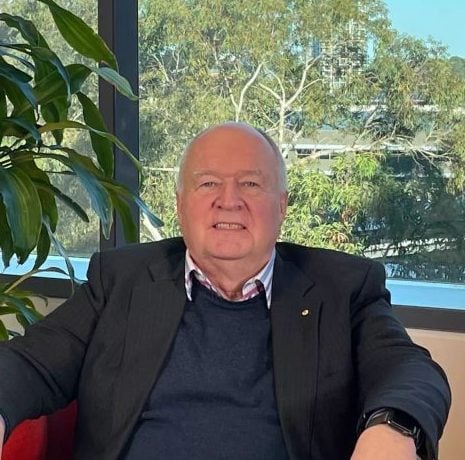What is the current state of heart failure management in Australia, and what in your opinion are some of the biggest unmet needs in this field?
Heart failure is an increasing problem in Australia and is the most common reason that patients are admitted to hospital over 65 years of age. There are several treatment gaps for patients with heart failure in Australia, and probably the first and most important is the lack of recognition that heart failure is the cause of the patient’s symptoms. Often a patient will complain of breathlessness, fatigue and be given maybe some diuretics in general practice and nothing further is done until the patient is admitted to hospital with an acute decompensation.
The formal diagnosis of heart failure is made at that time and proper treatments are instituted. One of the issues after that is most hospitals don’t have a dedicated heart failure unit and a dedicated heart failure service to follow the patients up. So often they return to the care of the general practitioner where less than ideal institution of guideline directed medical therapy (GDMT) is undertaken. Even if patients do have a follow up with the hospital, often it’s not within the dedicated unit and often there’s not adequate follow up so that patients get on to the best therapies in a timely fashion.
Lastly, monitoring of patients after discharge is extremely important. Looking at weight, pulse rate, blood pressure, and in many of the hospital systems at the present time, we don’t have the ability to do that, to keep a close check on patients, to try and improve the symptoms, to get them on best therapy and reduce the risk of hospitalization for heart failure.
How do you address HF management gaps in your daily clinical practice?
I address the heart failure management gap in clinical practice by ensuring that patients who come in complaining of symptoms compatible with heart failure are investigated early rather than in a delayed fashion.
One of the issues with the diagnosis of heart failure is the relative unavailability of diagnostic tools. In patients with acute coronary syndromes, we can do a troponin and this will help make the diagnosis quickly. In heart failure, we have tests like the NT-proBNP that we can use to make a diagnosis of heart failure. But unfortunately in Australia this is not funded at the present time and there’s an out-of-pocket costs for the patients, so it is under utilized.
Similarly, echocardiography is the gold standard for detecting heart failure in Australia, but it’s often delayed or unavailable to patients, particularly in regional and rural areas. So there’s often a delay in making the diagnosis and therefore a delay in instituting the best medical therapy that’s available.
The way to address this is to have more availability of resources, more availability of diagnostic testing, and we’re really trying to press the government to allow us to use these tests and to be more available so that we can make the diagnosis earlier and get patients onto best therapy to prevent their deterioration to the point of needing hospitalization with an acute decompensation in their heart failure.
What is your overview of STRONG-HF study and what according to you is the role of NT-proBNP in the study protocol?
The STRONG-HF study was a very interesting and practice changing study in that it looked at rapid uptitration of patients on GDMT after admission to hospital with an acute decompensation. Patients were basically discharged from hospital and came back for very frequent follow up with the goal of increasing their GDMT and in this case, an inhibitor of the renin angiotensin system, a beta blocker and then the MRA to try and get them onto maximally tolerated doses within a relatively short period of time, so 6 to 8 weeks.
The patients who were in this fast track uptitration program did better. There was less hospitalized patient for heart failure and a better outcome overall. This study shows that it’s feasible, it’s achievable and translates to better outcomes. But in the real world, it’s difficult because it’s fairly resource intensive. And so a lot of places in Australia would not have the ability to use the protocol that was seen in this STRONG-HF study.
With respect to NT-proBNP, it’s also interesting because we looked at the trajectory of NT-proBNP in this study. We found that patients whose NT-proBNP decreased were responding well to therapy and may not need rapid treatment changes. To patients whose NT-proBNP was not improving, suggested that more intervention was required, and the patients who had NT-proBNP increasing despite appropriate therapy, really needed more aggressive treatment and perhaps even hospitalization to try and prevent progressive deterioration. So the trajectory of the NT-proBNP changes over the course of the uptitration phase was really very helpful in predicting the response of therapy and the outcome of patients.
How do you envision the results of the STRONG-HF study would potentially affect the way heart failure is managed in Australia, and what do you think are the potential barriers to widespread adoption of these recommendations?
The STRONG-HF study shows us that rapid increase in doses to maximum tolerated levels of GDMT after an acute decompensation is feasible, achievable and improves the outcome of patients in this situation.
The difficulty from an Australian perspective is that it is very labor intensive. Most hospitals don’t even have a heart failure service, let alone a dedicated follow up service to look at these patients. Even if we do, we don’t have the resources to have weekly or two weekly follow up with either a heart failure nurse practitioner or a heart failure doctor. The logistics of achieving this sort of therapy and this sort of program would be difficult in Australia without the support of the hospital administrators. We will be pushing them to do so because it translates into an improvement in outcomes and decrease in hospitalization. We feel that would be cost neutral overall, but we’re yet to be able to make that argument and convince our administrators to give us the support to allow the STRONG-HF protocol to be implemented in many hospitals.
How would you advise the integration of the follow up recommendations as per STRONG-HF study into clinical practice in the Australia healthcare setup?
Implementing the STRONG-HF protocol in the Australian context would be challenging, but it’s certainly achievable. Most big hospitals should have a dedicated heart failure service given that the incidence and prevalence of heart failure is progressively increasing as the number of admissions to hospital.
We’ve shown from STRONG-HF that if you do have a program where patients are put on best medical therapy and this is done relatively quickly, it improves outcomes and keeps patients out of hospital. The argument that we would make to these hospital administrative staff and government is that by providing the resources to implement the STRONG-HF program in clinical practice will translate into a marked reduction in rehospitalization for heart failure and improve patient outcomes. And so we would really strongly recommend that this can be done over a period of time so that we can implement the program to improve the outcome of our patients and reduce the need for recurrent hospitalization, for heart failure.
How would you advise your peers in Asia Pacific on optimizing GDMT for their HF patients for better outcomes?
The goal of treating patients with heart failure is to get them onto GDMT to try and improve their outcome, reduce hospitalization for heart failure, and improve quality of life.
In HFpEF, the only GDMT that is available is the SGLT2 inhibitors and other drugs it should then be used depending on the individual patient’s characteristics. In HFrEF, we have a greater number of drugs that have been proven to be beneficial in this situation, and that includes inhibitors of the renin angiotensin system, so ACE or ARNI. We have beta blockers, we have MRA, which in Australia are predominantly spironolactone and then the SGLT2 inhibitors. And our goal is to get patients with HFrEF on all those therapies as soon as we can at the maximally tolerated doses that have been shown to be effective and improve outcomes in the clinical trials.
Sometimes this is easier said than done due to problems with blood pressure, pulse rate and other side effects. But our goal is to get patients on all four foundational therapies for patients with HFrEF as soon as we can. And we know this translates into improvement of outcomes or reduction in hospitalization for heart failure, a reduction of mortality in some cases, and an improvement in the quality of life for our patients with heart failure.


















